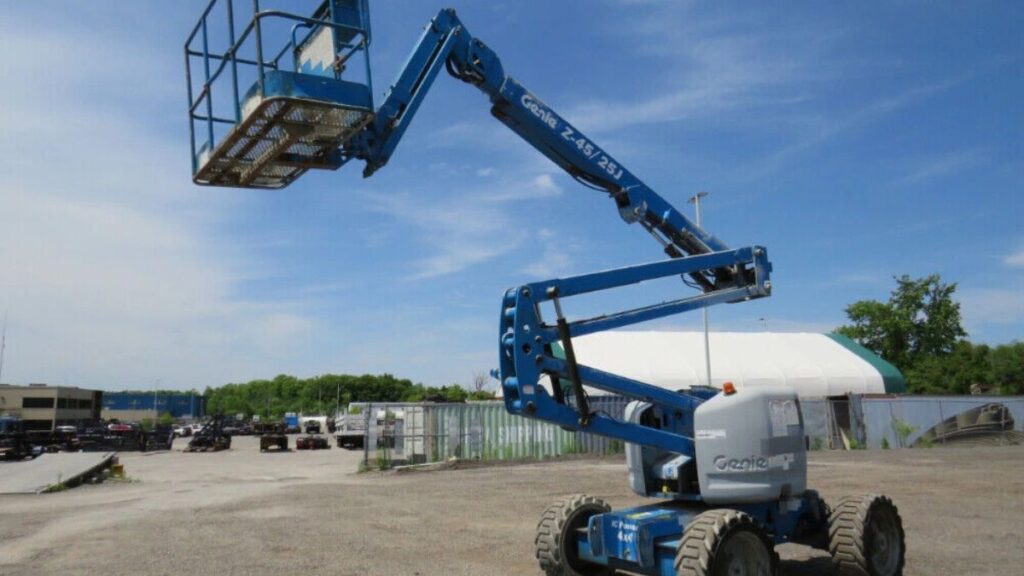Introduction
In the world of industrial, commercial, and construction work, operating at height is both common and critical. Whether you’re repairing exterior structures, installing signage, performing routine maintenance, or trimming tall trees, you need the right equipment to reach those elevated spaces safely and efficiently. Traditional solutions like scaffolding or ladders come with limitations—both in safety and practicality. That’s where boom lifts come in.
Boom lifts offer not only vertical reach but also horizontal flexibility, allowing workers to access otherwise unreachable areas with stability and precision. However, investing in a boom lift outright doesn’t always make financial sense for businesses or contractors who only need it periodically. That’s where boom lift rental becomes a highly valuable option, providing all the benefits of the equipment without the long-term commitment.
This article will walk you through what boom lifts are, the different types available, their advantages, safety protocols, and why renting—rather than buying—can maximize both your operational efficiency and bottom line.
What Is a Boom Lift?
A boom lift, also known as a man lift or cherry picker, is a type of aerial work platform (AWP) designed to safely lift workers, tools, and materials to elevated job sites. Unlike scissor lifts, which only move vertically, boom lifts provide both vertical and horizontal outreach. This makes them especially useful for jobs that require navigating over, around, or across obstacles.
The lift typically consists of a base, an extendable arm (or “boom”), and a small work platform or bucket at the top. Operators can maneuver the arm in various directions using controls located in the platform itself, allowing for precision placement even in challenging environments.
Types of Boom Lifts
Boom lifts come in various configurations, each designed to address specific worksite challenges. Knowing the differences can help you choose the best model for your needs.
1. Articulating Boom Lifts
Also called “knuckle booms,” these lifts have segmented arms that bend at multiple points, allowing operators to move the platform over and around obstacles. They’re ideal for jobs that require a lot of maneuvering in tight or crowded areas, such as maintenance inside industrial plants or buildings.
2. Telescopic Boom Lifts
Also known as “straight booms,” these lifts feature a straight extendable arm, offering maximum horizontal and vertical reach. Telescopic booms are commonly used for high-elevation tasks that require distance coverage, such as roofing or structural work on multi-story buildings.
3. Trailer-Mounted Boom Lifts
These are towable units that can be easily transported with a pickup truck or trailer hitch. They’re perfect for short-term jobs and come with stabilizers to ensure safety during operation.
4. Spider Lifts
These lightweight, compact lifts use spider-like legs for stabilization and are ideal for indoor spaces or delicate outdoor surfaces. They can fit through narrow doorways and operate on uneven ground, making them a great choice for specialized applications.
Key Benefits of Using a Boom Lift
Boom lifts are not just about reaching heights—they’re about doing it safely, efficiently, and with greater productivity. Here’s how:
1. Versatility
Because of their design, boom lifts can be used in countless applications—from tree trimming and painting to steel erection and utility maintenance. The extendable boom arm allows workers to position themselves exactly where they need to be, regardless of obstacles.
2. Increased Safety
Boom lifts come equipped with guardrails, harness anchors, emergency shut-off controls, and stabilization systems. These safety features significantly reduce the risk of falls, making them a far safer option than ladders or makeshift platforms.
3. Enhanced Efficiency
The ability to quickly and precisely position the work platform improves productivity. Workers spend less time adjusting scaffolding or moving ladders and more time focusing on their tasks.
4. Heavy Load Capacity
Most boom lifts are designed to support multiple workers along with tools and materials. This means fewer trips up and down, further saving time and energy.
When to Choose Boom Lift Rental
While some companies may benefit from owning a boom lift, many find that boom lift rental is a more cost-effective and convenient solution. Here are several reasons why:
a. Cost Savings
Purchasing a new boom lift can be a six-figure investment, not including maintenance, storage, and transport. Renting eliminates the upfront capital cost and turns a significant purchase into a manageable operational expense.
b. Short-Term Projects
For businesses or contractors who only need the lift for a week, month, or even a single job, renting just makes sense. You get the equipment when you need it—without worrying about long-term depreciation or storage.
c. Access to a Variety of Equipment
Each job may require a different type of lift. Renting allows you to select the exact model you need, whether it’s a 30-foot articulating boom or an 80-foot telescopic one.
d. No Maintenance Burden
Boom lifts require regular servicing, inspections, and compliance with safety regulations. With rental, the provider is responsible for all of that, giving you peace of mind.
e. Modern Features
Rental fleets are often updated with the latest models, meaning you get the newest safety technology, fuel efficiency, and ergonomic designs.
How to Choose the Right Boom Lift
When preparing for a boom lift rental, consider the following factors to ensure you select the right model for your job:
- Working Height: Know how high you need to go. Telescopic lifts often reach higher than articulating models.
- Horizontal Reach: If your job requires reaching out over obstacles, ensure the lift has adequate extension.
- Ground Conditions: For rough or uneven terrain, choose a lift with four-wheel drive and outriggers.
- Indoor or Outdoor Use: Electric lifts are preferred indoors due to their zero-emissions and quiet operation, while diesel or gas-powered models are more powerful and suitable for outdoor environments.
- Weight Capacity: Check the platform’s maximum load to make sure it can accommodate workers and any tools or materials.
Safety Considerations
No matter how advanced the equipment, operator safety must always be a top priority. Here are some essential best practices:
1. Operator Training
Only trained and certified operators should handle boom lifts. Familiarity with the controls and emergency procedures is critical.
2. Personal Protective Equipment (PPE)
Harnesses, helmets, non-slip footwear, and eye protection should always be worn. Most boom lifts have anchor points for lanyards and fall arrest systems.
3. Inspect Before Use
Before using the lift, inspect for leaks, worn parts, loose bolts, or electronic malfunctions. Always check that the platform controls and ground controls are fully functional.
4. Weather Awareness
Avoid operating boom lifts during high winds, lightning, or heavy rain. Even moderate wind can create instability when the boom is fully extended.
5. Stabilization
Ensure the lift is on solid, level ground. Use outriggers or stabilizers when needed, and never exceed the lift’s rated capacity.
The Financial Side: What to Expect in Rental Costs
The cost of boom lift rental depends on several factors—lift type, height, rental duration, and provider policies. Here’s a general breakdown:
| Type of Boom Lift | Daily Rate | Weekly Rate | Monthly Rate |
| Articulating Boom (30–45 ft) | $250 – $400 | $700 – $1,100 | $2,000 – $3,200 |
| Telescopic Boom (60–80 ft) | $400 – $600 | $1,100 – $1,800 | $3,000 – $5,000 |
| Trailer-Mounted Boom | $150 – $300 | $500 – $800 | $1,200 – $2,000 |
Additional costs may include delivery/pick-up, fuel surcharges, insurance, and optional damage waivers. Always ask for a full quote upfront to avoid surprises.
Tips for a Smooth Rental Experience
- Book Early: Equipment availability can be limited during peak construction seasons.
- Confirm Specs: Double-check platform height, reach, and weight capacity before committing.
- Read the Agreement: Know your responsibilities regarding equipment condition, late fees, and insurance coverage.
- Ask About Support: A good rental provider will offer phone support, on-site service, and timely equipment replacement if needed.
Conclusion
Boom lifts have revolutionized the way businesses and professionals handle elevated work. With unmatched reach, maneuverability, and safety features, they are the go-to solution for countless applications. But purchasing a boom lift doesn’t make sense for every organization—especially those with temporary or variable needs.
That’s why boom lift rentals in Garner, NC is such a powerful option. It allows you to choose the exact type of equipment your job requires, keep costs under control, and avoid the long-term obligations of ownership. From high-rise maintenance to tree trimming, renting gives you the freedom to work smarter, safer, and more efficiently.
Whether you’re a seasoned contractor or managing a one-time project, renting a boom lift may be the smartest move you can make to reach new heights.






